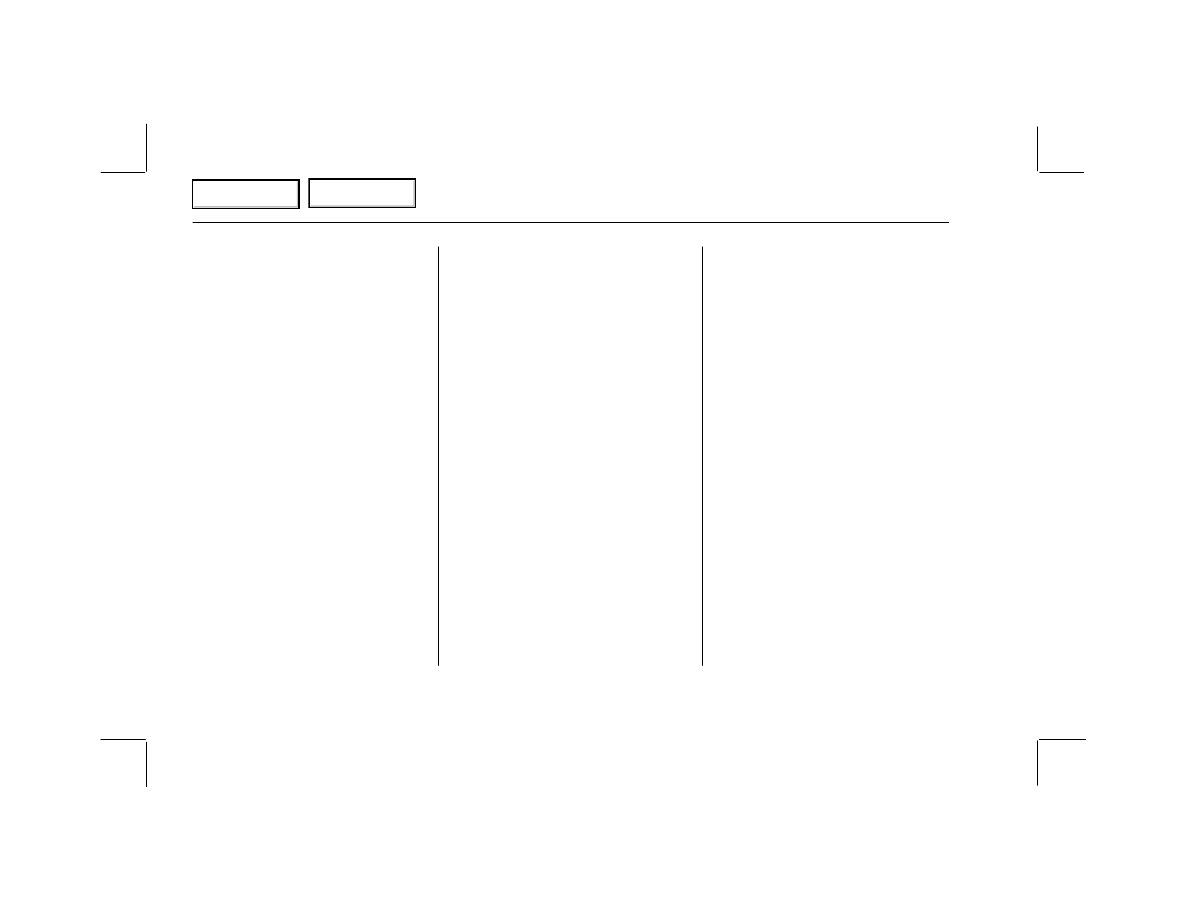Honda Passport (2002 year). Instruction - part 12

174
Driving Tips
systems, such as the
SRS
and
anti-lock brake system.
However, if electronic accessories
are improperly installed, or
exceed your vehicle’s electrical
system capacity, they can interfere
with the operation of your vehicle,
or even cause the airbags to
deploy.
Before installing any accessory:
•
Make sure the accessory does
not obscure any lights, or
interfere with proper vehicle
operation or performance.
•
Be sure electronic accessories
do not overload electrical
circuits (see page
).
•
Have the installer contact your
Honda dealer for assistance
before installing any electronic
accessory.
If possible, have your dealer
inspect the final installation.
Modifications
Do not remove any original
equipment or modify your vehicle
in any way that would alter its
design or operation. This could
make your vehicle unsafe and
illegal to drive.
For example, do not make any
modifications that would change
the ride height of your vehicle, or
install wheels and tires with a
different overall diameter.
Such modifications can adversely
affect handling, and interfere with
the operation of the vehicle’s
anti-lock brakes and other
systems.
In addition, any modifications that
decrease ground clearance
increase the chance of
undercarriage parts striking a
curb, speed bump, or other raised
object, which could cause your
airbags to deploy.
Do not modify your steering
wheel or any other part of your
Supplemental Restraint System.
Modifications could make the
system ineffective.
Additional Safety Precaution
Do not attach or place objects on
the airbag covers. Any object
attached to, or placed on, the
covers marked “
SRS
,” in the
center of the steering wheel and
on top of the dashboard, could
interfere with the proper operation
of the airbags. Or, if the airbags
inflate, the objects could be
propelled inside the vehicle and
hurt someone.
Main Menu
Table of Contents